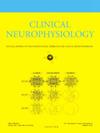EEG-based responses of patients with disorders of consciousness and healthy controls to familiar and non-familiar emotional videos
IF 3.7
3区 医学
Q1 CLINICAL NEUROLOGY
引用次数: 0
Abstract
Objective
To investigate the differences in the brain responses of healthy controls (HC) and patients with disorders of consciousness (DOC) to familiar and non-familiar audiovisual stimuli and their consistency with the clinical progress.
Methods
EEG responses of 19 HC and 19 patients with DOC were recorded while watching emotionally-valenced familiar and non-familiar videos. Differential entropy of the EEG recordings was used to train machine learning models aimed to distinguish brain responses to stimuli type. The consistency of brain responses with the clinical progress of the patients was also evaluated.
Results
Models trained using data from HC outperformed those for patients. However, the performance of the models for patients was not influenced by their clinical condition. The models were successfully trained for over 75% of participants, regardless of their clinical condition. More than 75% of patients whose CRS-R scores increased post-study displayed distinguishable brain responses to both stimuli.
Conclusions
Responses to emotionally-valenced stimuli enabled modelling classifiers that were sensitive to the familiarity of the stimuli, regardless of the clinical condition of the participants and were consistent with their clinical progress in most cases.
Significance
EEG responses are sensitive to familiarity of emotionally-valenced stimuli in HC and patients with DOC.
意识障碍患者和健康对照组对熟悉和不熟悉的情感视频的脑电图反应
目的 研究健康对照组(HC)和意识障碍患者(DOC)对熟悉和不熟悉视听刺激的大脑反应的差异及其与临床进展的一致性。方法 记录19名健康对照组(HC)和19名意识障碍患者在观看情绪化的熟悉和不熟悉视频时的脑电图反应。利用脑电图记录的差分熵来训练机器学习模型,旨在区分大脑对刺激类型的反应。此外,还评估了大脑反应与患者临床进展的一致性。然而,患者模型的表现并不受临床状况的影响。超过 75% 的参与者成功地训练了模型,无论其临床状况如何。超过75%的患者在研究后CRS-R评分上升,他们对这两种刺激都表现出了可区分的大脑反应。结论对情绪化刺激的反应使建模分类器对刺激的熟悉程度敏感,与参与者的临床状况无关,并且在大多数情况下与他们的临床进展一致。
本文章由计算机程序翻译,如有差异,请以英文原文为准。
求助全文
约1分钟内获得全文
求助全文
来源期刊

Clinical Neurophysiology
医学-临床神经学
CiteScore
8.70
自引率
6.40%
发文量
932
审稿时长
59 days
期刊介绍:
As of January 1999, The journal Electroencephalography and Clinical Neurophysiology, and its two sections Electromyography and Motor Control and Evoked Potentials have amalgamated to become this journal - Clinical Neurophysiology.
Clinical Neurophysiology is the official journal of the International Federation of Clinical Neurophysiology, the Brazilian Society of Clinical Neurophysiology, the Czech Society of Clinical Neurophysiology, the Italian Clinical Neurophysiology Society and the International Society of Intraoperative Neurophysiology.The journal is dedicated to fostering research and disseminating information on all aspects of both normal and abnormal functioning of the nervous system. The key aim of the publication is to disseminate scholarly reports on the pathophysiology underlying diseases of the central and peripheral nervous system of human patients. Clinical trials that use neurophysiological measures to document change are encouraged, as are manuscripts reporting data on integrated neuroimaging of central nervous function including, but not limited to, functional MRI, MEG, EEG, PET and other neuroimaging modalities.
 求助内容:
求助内容: 应助结果提醒方式:
应助结果提醒方式:


